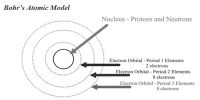Planck’s Quantum Theory of Electromagnetic Radiation
Some of the experimental phenomena such as diffraction and interference can be explained by the wave nature of the electromagnetic radiation. However, the following are some of the observations which could not be explained with the help of even the electromagnetic theory of 19th century physics (known as classical physics):
(i) the nature of emission of radiation from hot bodies (black body radiation)
(ii) ejection of electrons from the metal surface when radiation strikes it (photoelectric effect)
(iii) variation of the heat capacity of solids as a function of temperature
(iv) line spectra of atoms with special reference to hydrogen.
It is noteworthy that the first concrete explanation for the phenomenon of the blackbody radiation was given by Max Planck in 1900. This phenomenon is given below: When solids are heated they emit radiation over a wide range of wavelengths. For example, when an iron rod is heated in a furnace, it first turns to dull red and then progressively becomes more and more red as the temperature increases. As this is heated further, the radiation emitted becomes white and then becomes blue as the temperature becomes very high. In terms of frequency. it means that the radiation emitted goes from a lower frequency to a higher frequency as the temperature increases. The red color lies in the lower frequency region while blue color belongs to the higher frequency region of the electromagnetic spectrum.
The ideal body, which emits and absorbs all frequencies, is called a blackbody and the radiation emitted by such a body is called black body radiation. The exact frequency distribution of the emitted radiation (i.e. intensity versus frequency curve of the radiation) from a black body depends only on its temperature. At a given temperature, the intensity of radiation emitted increases with the decrease of wavelength reaches a maximum value at a given wavelength and then starts decreasing wi












